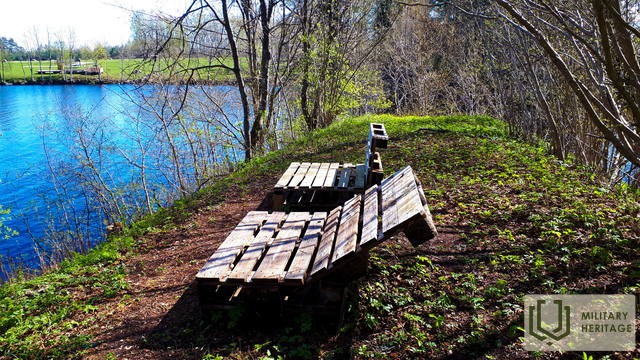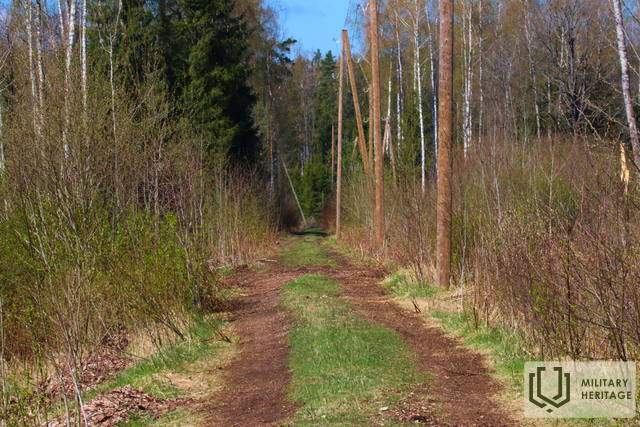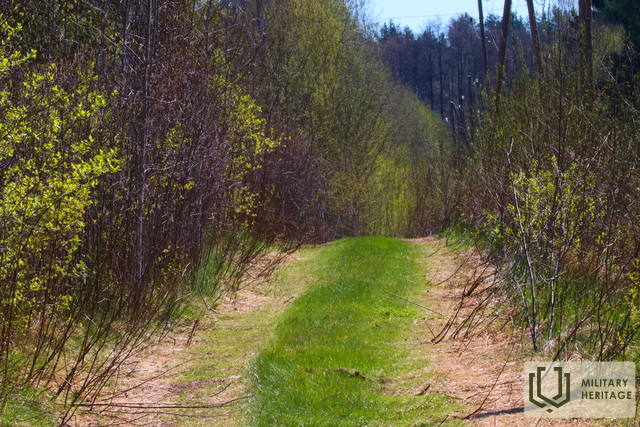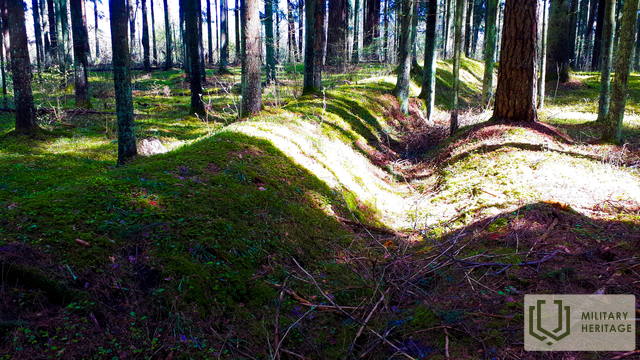Niega (Melderupe) and its surroundings Battle site

The Ėega River is still called Melderupi on maps from the 1940s. With the construction of the Ķegums HPP, its last 2.6 km were flooded, creating a more than 100 m wide extension of the river. To provide gravel for the construction of the Ķegums HPP, a quarry was created on the eastern bank of the Ėega, and a railway bridge was built across the river. Gravel was transported to the new HPP building by narrow-gauge railway along a 6 km long railway line. The first two kilometers of the railway site are visible both in nature and on LIDAR maps. Further on, the railway site coincides with the modern Jaunjelgava - Ķegums road (P85). On the western bank of the Ėega, about 0.2 km north of the Bridgekeepers' House (the owners have memories of the Second World War and related events in this place), there is a spring - a popular water intake site. Active military activity took place in the vicinity of the Ėega in both world wars of the 20th century. If you look at LIDAR maps and in nature, trench positions are visible north of the P85 road and on the river banks. South of the P85 road, a dune ridge about 0.8 km long adjoins the flooded part of the Ėega from the southwest, the top and slopes of which are dotted with trenches. On the side of the small forest road that connects the P85 road with the Liepdegumi houses, there is a separate dune, the rectangular pits on the slopes of which indicate that buildings or warehouses were located here. The aforementioned dune is surrounded by a strip of trenches about a kilometer long from the north and west. Man-made negative relief forms are also visible south of the P85 road. A dense network of trenches and buildings or/and warehouses (a network of pits of various sizes) is present in nature and is also visible on LIDAR maps on the eastern bank of the Žega between the P85 road and Širmeļupīte. 1.8 km east of Žega is the cemetery of the Lezmaņi brothers. You can reach them along the small forest road that winds around Žega and Širmeļupīte. The third (furthest to the south) trench line marked on the map of the National Library of Latvia ““Zusammendruck Riga, Gezeichet u.gedruckt vd Vermessungs”” is clearly visible on LIDAR maps and in nature even today – a century later.
Used sources and references:
1. Historical, LIDAR and other maps: https://vesture.dodies.lv/#m=15/56.71776/24.69606&l=O/KDW
2. Map collection of the National Library of Latvia, map “Zusammendruck Riga, Gezeichet u.gedruckt vd Vermessungs” – Abt.18., 1: 100 000”
3. Construction of Keguma HPP, https://energetikasmantojums.lv/interesanti-fakti-par-keguma-hes-celtniecibu/
Related stories
Saving the bridge over the Nega River from being blown up
During the German retreat in 1944, many important objects were blown up and it was very difficult to prevent this, however, there are also stories about miraculous incidents when the courage of local residents and the tolerance of a soldier allow places that are important to the locals to be saved, and the salmon survived. One of the stories is this one about a discussion between a housewife and a German soldier that saved an entire bridge from being blown up.
Life during World War II on the Kegums side
Memories of the now distant royal era flashed through. For the older generation, it would remind them of their own experiences, while for the younger generation, it might bore them.

















